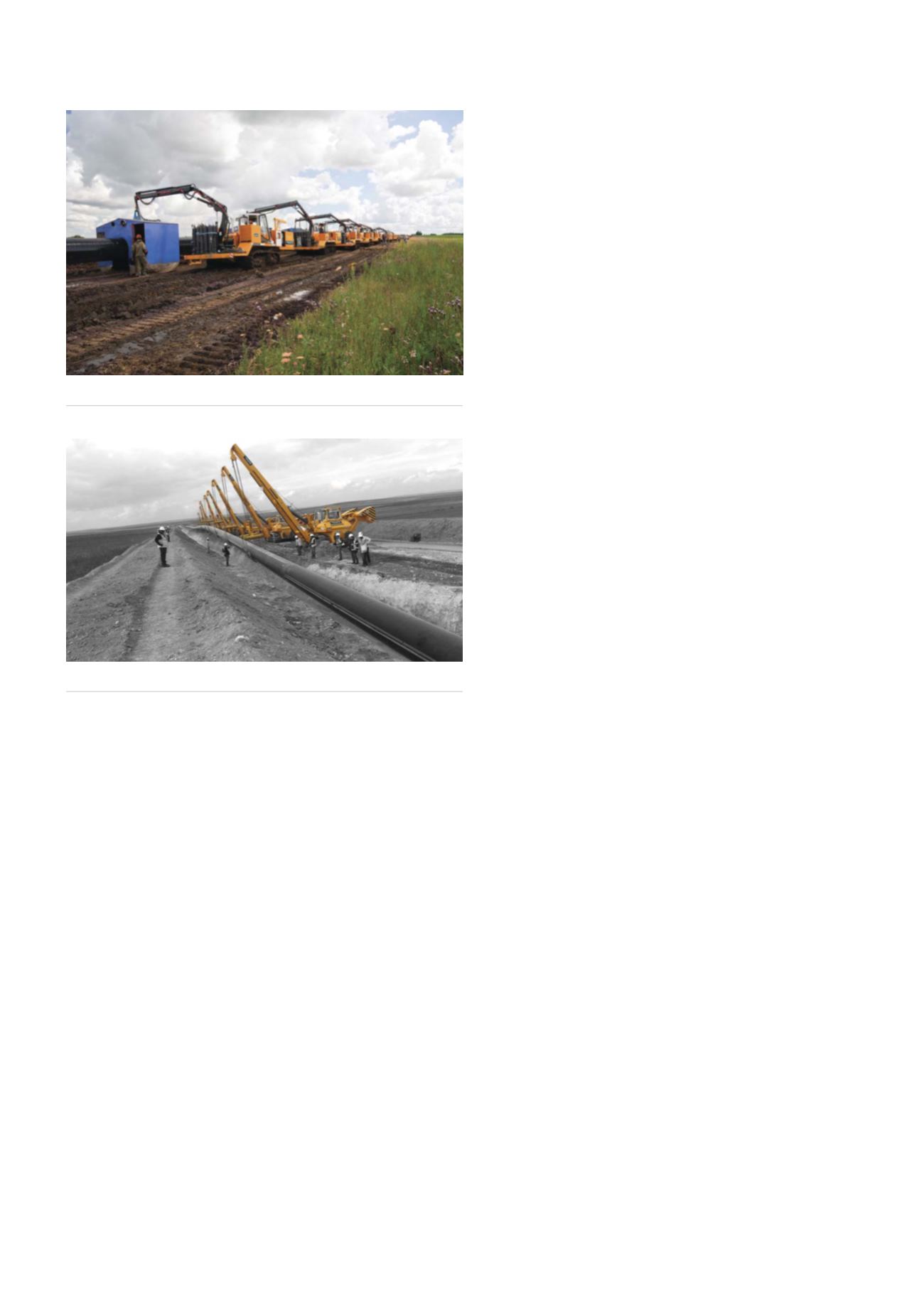
and long distance pipelines that have been built or are still
under construction.
Although some countries aim to reduce the use of fossil
fuels, such as natural gas, global energy and gas demand
is still increasing. Consumption of natural gas globally
is projected to increase from 120 trillion ft
3
in 2012 to
203 trillion ft
3
in 2040 in the International Energy Outlook
2016 (IEO2016) reference case. By energy source, natural
gas accounts for the largest increase in world primary
energy consumption. This also means that so far there is
no foreseeable end to the construction of pipelines for
transporting natural gas, and on a global scale the number
of kilometres of pipeline under construction is only
increasing, though mainly for fewer projects but of larger
scale.
These large-scale projects are of great value for all
parties involved, but in many cases, the sheer size of the
tendered lots exceed the capabilities of single construction
companies, not only in terms of the workforce but also
in construction machinery. This is where many pipeline
construction companies find themselves between a
rock and a hard place: where on one side construction
companies want to own all the necessary equipment
in order to have maximum flexibility, and on the other,
many of them do not want to have the burden of a large
equipment fleet on their balance sheet. In many companies
this results in a discussion, not about the machinery
needs on an actual project, but more about maintaining a
machinery fleet in between projects.
Management of the fleet
When it comes to fleet management, pipeline construction
equipment can be divided into three major categories:
)
A1: Essential equipment, needs to owned.
)
A2: Necessary equipment, can be owned, (some)
alternatives available.
)
A3: Needed equipment, no need to own, widely
available.
Without going into too much detail, category A1
equipment can be defined as specialty equipment like
welding systems and HDD equipment, and can even be
translated in soft skills like project management. It covers
all the items a pipeline construction company specialises
in.
Category A3 is easiest explained as earthmoving
equipment; machines that are widely available, even when
in more remote locations.
Finally, category A2 is reason for most discussions; the
specialised pipeline construction equipment covers the
likes of pipelayers, welding tractors, and pipe bending
machines. These are machines that are always necessary
but have a fairly limited availability, even on a global scale.
Due to this limited availability, construction companies
generally prefer to own this specialised machinery so they
have direct access at all times. Therefore, most pipeline
construction companies choose to have a basic equipment
fleet with a limited quantity of machines – largely
machinery that is suitable for most common diameters. This
gives the company the flexibility to mobilise quickly and
build smaller projects, without having the financial burden
of a large number of machines.
Fortunately, most pipeline construction equipment
has a long, useful lifespan. As opposed to earthmoving
equipment, pipelayers, welding tractors and pipe bending
machines stand idle for most of their time on a project. As
project diameters may vary, it is also possible that machines
cannot be used because the pipe diameter is either too
big or too small, resulting in longer periods of standstill
in between projects. After a number of years, even with
sufficient projects, this can result in machines with
relatively low working hours.
The very first Liebherr pipelayer RL422-1001
manufactured in 1995 currently has 13 500 working hours,
which means an average of approximately 2.5 working
hours per day (based on 45 working weeks per year, five
working days per week, for 25 years). This low occupation
does result in a high residual value of pipeline construction
machinery in general.
Another reason for owning pipeline construction
equipment is that, in some cases, it is mandatory to have
Figure 2.
A full, large diameter welding spread.
Figure 3.
Eight RL64 in action on a 48 in. jobsite in Turkey.
34
World Pipelines
/
MARCH 2020








